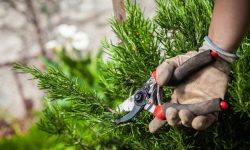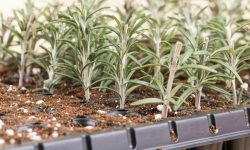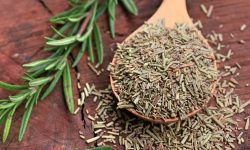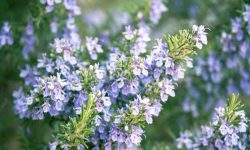There’s something undeniably magical about the moment hyacinths burst into bloom—vivid colors, graceful form, and a fragrance so rich it fills the air with spring’s promise. Whether planted in garden beds or nestled in containers, hyacinths bring life, elegance, and joy to any space they touch.
But to unlock their full beauty, timing is everything. Knowing exactly when to plant hyacinth bulbs in your region can mean the difference between a short-lived bloom and a stunning, long-lasting display. This guide will help you time your planting perfectly, so your garden greets the season with color, fragrance, and unforgettable charm.
Understanding Hyacinth Bulbs and Their Seasonal Needs

Hyacinth bulbs are perennial spring bloomers that thrive when they experience a cycle that mimics their natural rhythm—cool dormancy followed by gradual warming. These bulbs contain all the energy needed to produce vibrant flowers, but they rely heavily on environmental cues, especially temperature changes, to trigger healthy growth and blooming.
For hyacinths to perform well, they need a cold period of dormancy, typically around 10 to 12 weeks at temperatures between 35–48°F (1–9°C). This chilling phase is crucial, as it encourages proper root development and flower formation. In regions with naturally cold winters, this process happens underground. However, in warmer climates, gardeners may need to artificially chill bulbs in a refrigerator before planting.
Understanding this seasonal need helps you align your planting time with nature’s cycle. Planting too early in warm soil can prevent proper root growth, while planting too late may not give bulbs enough chilling time to flower. Whether you’re growing them indoors or out, honoring their biological rhythm ensures strong stems, rich blooms, and that iconic hyacinth fragrance that defines the start of spring.
The Importance of Chilling for Hyacinth Bulbs
Chilling is an essential part of a hyacinth bulb’s life cycle and plays a vital role in triggering the biological processes that lead to flowering. Without a proper cold period, hyacinths may produce weak stems, small or deformed blooms, or even fail to flower at all. This chilling phase mimics the natural winter dormancy the bulbs would experience in the ground, signaling them to prepare for spring growth.
Hyacinth bulbs require approximately 10 to 14 weeks of chilling at a consistent temperature between 35°F and 48°F (1°C to 9°C). In colder regions, this process happens naturally when bulbs are planted in fall and left in the ground over winter. However, in warmer climates where winters are too mild, gardeners must simulate this cold period manually. This is typically done by placing unplanted bulbs in a breathable paper bag and storing them in a refrigerator—not near fruits like apples or bananas, as the ethylene gas they emit can damage the bulbs.
The chilling period triggers hormone activity inside the bulb that tells it to break dormancy and initiate flowering once it’s exposed to warmth. Skipping or shortening this phase can delay blooming or cause the plant to focus energy on leaf production instead of flowers. Whether you’re planning to grow hyacinths outdoors or force them indoors in containers or vases, providing adequate chilling ensures robust blooms with rich color and strong fragrance—exactly what makes hyacinths such cherished spring flowers.
When to Plant Hyacinth Bulbs in Cold Climates (Zones 3–5)
In colder regions such as USDA Hardiness Zones 3 to 5, hyacinth bulbs thrive when planted at the right moment before the ground freezes. These areas experience long, harsh winters, which means gardeners must time bulb planting carefully to allow root development before the soil becomes too hard or unworkable.
The best time to plant hyacinth bulbs in these zones is typically from late September to mid-October. This window ensures the bulbs have 4 to 6 weeks to establish strong roots while soil temperatures are still above freezing—ideally between 40°F and 50°F (4°C to 10°C). Once root growth has started, the bulbs will enter their natural dormancy phase and undergo the critical chilling process naturally through the region’s cold winter.
Because winters in these zones are reliably cold, there is usually no need to pre-chill bulbs. Simply plant them at the proper depth in well-draining soil and mulch the area lightly after the ground begins to cool. This mulch layer helps regulate soil temperature and provides insulation as the weather becomes colder.
By planting at the optimal time in fall, gardeners in cold climates can look forward to a vivid display of hyacinths in early to mid-spring. These blooms will be supported by well-developed roots and an ideal chilling period, producing strong stems and intensely fragrant flowers that herald the end of winter.
Planting in Moderate Climates (Zones 6–7)
In moderate climates like USDA Zones 6 and 7, where winters are cool but not extreme, timing is key to ensure your hyacinth bulbs receive enough chilling to bloom properly. The ideal planting period in these zones falls between mid-October and early November, when soil temperatures begin to drop but haven’t yet frozen.
These regions generally provide just enough natural cold for hyacinths to undergo their required dormancy. However, in unusually mild years, or in areas with frequent winter warm spells, it’s wise to monitor soil temperatures. If daytime soil remains consistently above 50°F (10°C) late into the season, consider pre-chilling the bulbs in a refrigerator for about 6 to 8 weeks before planting to ensure reliable flowering.
Plant bulbs in well-draining soil and choose a location that stays relatively cool during winter. A light layer of mulch helps protect the bulbs during fluctuating temperatures and prevents premature sprouting.
With proper timing and slight adjustments in mild years, gardeners in Zones 6–7 can expect hyacinths to bloom beautifully in early spring, bringing color and fragrance just as the garden awakens.
Best Time to Plant Hyacinth Bulbs in Warm Climates (Zones 8–10)
In warm climates like USDA Zones 8 to 10, natural winter temperatures are often too mild for hyacinth bulbs to receive the cold period they need to bloom properly. Because of this, pre-chilling is essential before planting. To mimic winter conditions, place the bulbs in a refrigerator (not near fruits) for 10 to 12 weeks at temperatures between 35°F and 48°F (1°C to 9°C).
After chilling, the best time to plant is late December through January, when outdoor temperatures are at their coolest. Choose a shaded or partially shaded location to protect bulbs from heat spikes that may cause early sprouting.
Once planted in well-draining soil or containers, water lightly and avoid overwatering during cool periods. While hyacinths in warm zones may not bloom as long or vigorously as in colder areas, proper chilling and timely planting can still result in beautiful, fragrant spring flowers.
Indoor Forcing and the Ideal Planting Time
Forcing hyacinths indoors allows gardeners to enjoy their vibrant blooms and sweet fragrance weeks before spring arrives. This method requires precise timing and careful preparation to mimic the bulb’s natural growth cycle. The key to successful indoor forcing is starting the chilling process early enough to align blooming with your desired display period—often around late winter or early spring.
To begin, place healthy, unplanted hyacinth bulbs in a refrigerator for about 10 to 14 weeks at temperatures between 35°F and 48°F (1°C to 9°C). This chilling period typically starts from late September to early November, depending on when you want the blooms to appear. For example, if you want flowers in early February, you should begin chilling bulbs by early October.
After chilling, plant the bulbs in pots or forcing glasses with the base just above the water or nestled in moist soil. Place them in a cool, dark spot (around 50°F/10°C) for about 2 weeks to encourage root development. Once roots are established and shoots emerge, move the pots into a brighter, warmer room to stimulate blooming.
By controlling the chilling and light exposure, indoor forcing lets you enjoy hyacinths even when it’s cold outside. With proper timing, you can stagger plantings to have continuous blooms throughout the winter months.
Tips for Timing Based on Local Conditions
While USDA zones are a helpful guide, your local weather and soil conditions play a key role in determining the best time to plant hyacinth bulbs. Instead of relying only on the calendar, track soil temperature, which should drop to around 50°F–60°F (10°C–15°C) before planting. Planting in warm soil can cause premature sprouting and weaker blooms.
In regions with unpredictable fall weather, use a soil thermometer and wait until cooler days are consistent. If you live in an area with heavy fall rains, make sure the soil drains well to prevent bulb rot.
Also consider your local frost dates and historical weather patterns to better predict natural chilling. If needed, chill bulbs in the fridge before planting, especially in warmer zones.
By adjusting your timing based on local cues, you’ll give your hyacinths the best chance for healthy growth and vibrant spring blooms.
The Role of Soil Preparation in Timing Success
Proper soil preparation is just as important as planting at the right time. Well-draining soil ensures hyacinth bulbs don’t sit in excess moisture, which can lead to rot—especially in cool, wet seasons. Before planting, loosen the soil to a depth of 6 to 8 inches and mix in compost or organic matter to improve drainage and fertility.
Preparing the soil early, before temperatures drop, gives you flexibility to plant as soon as conditions are right. In areas with heavy clay or compacted ground, raised beds or containers with quality potting mix are great alternatives.
Healthy, prepped soil holds the right balance of moisture and air, helping bulbs root quickly and withstand seasonal changes. This foundation supports strong, timely growth when spring arrives.
Adjusting Planting Times for Containers and Raised Beds
When growing hyacinths in containers or raised beds, planting times may need to be adjusted slightly compared to in-ground planting. These setups tend to warm and cool more quickly than the ground, meaning bulbs may be exposed to temperature shifts sooner.
In colder climates, consider planting a bit later in containers to avoid early sprouting during a warm spell. Containers lose heat faster, so bulbs are also more vulnerable to deep freezes. Move pots to sheltered areas, insulate them, or bury them in the ground temporarily to protect against harsh cold.
In warmer climates, you can plant earlier in containers after the chilling period, since potting mix cools faster than ground soil. Just be sure to monitor for sprouting and bring containers into a cooler spot if temperatures spike unexpectedly.
Raised beds generally mimic in-ground planting but may drain faster and warm sooner in spring. Keep an eye on soil moisture and temperature to adjust planting by a week or two if needed.
By being flexible and observing your container or raised bed conditions, you’ll give hyacinth bulbs the best chance to root well and bloom beautifully.
Companion Planting and Seasonal Timing
Companion planting hyacinths with other spring bulbs like tulips, daffodils, and crocuses can create a stunning, layered display that extends the flowering season in your garden. Because hyacinths typically bloom early to mid-spring, coordinating their planting time with later-blooming bulbs allows for continuous color and fragrance over several weeks.
When planning companion plantings, consider staggering planting depths and bloom times to avoid overcrowding and to ensure each species has enough space and nutrients. Hyacinths, with their strong fragrance and vibrant colors, often make excellent focal points in mixed bulb beds.
Timing is essential for this harmony—plant all bulbs according to their regional chilling needs and ideal planting windows. This coordination not only enhances visual appeal but also supports pollinators by providing a succession of nectar sources.
By carefully combining bulbs with complementary bloom times and colors, you can enjoy a dynamic, fragrant garden that evolves beautifully throughout the spring season.
Caring for Hyacinths After Planting
After planting hyacinth bulbs at the right time, proper care is essential to support healthy growth and vibrant blooms. Water the bulbs thoroughly immediately after planting to help settle the soil and encourage root development. During the growing season, keep the soil consistently moist but not waterlogged, as excessive moisture can cause bulb rot.
Mulching with straw, shredded leaves, or bark helps regulate soil temperature, retain moisture, and protect bulbs from extreme cold in colder climates. In areas with heavy rainfall, ensure good drainage to prevent standing water around the bulbs.
As shoots emerge in early spring, gradually remove mulch to allow more sunlight to reach the plants. Fertilize with a balanced, slow-release fertilizer to provide necessary nutrients for strong stems and abundant flowers.
Avoid disturbing the bulbs once they are established, and allow foliage to die back naturally after flowering. This process lets the bulb store energy for next year’s growth. With attentive care following planting, your hyacinths will flourish, producing fragrant, colorful blooms year after year.
Signs You Planted at the Right Time
Knowing you’ve planted hyacinth bulbs at the optimal time becomes clear through several positive growth indicators. One of the first signs is the timely emergence of healthy green shoots as temperatures begin to warm in early spring. These shoots should appear strong and upright, signaling good root development beneath the soil.
When the bulbs bloom, the flowers should be vibrant, fragrant, and well-formed with sturdy stems that hold the flower spikes upright. Proper timing often results in longer-lasting blooms that don’t wilt prematurely. Additionally, the leaves should be lush and green, showing that the bulbs have stored enough energy during dormancy.
If blooms are delayed, weak, or the foliage looks pale and sparse, it may indicate that the bulbs were planted too late or didn’t receive adequate chilling. Conversely, if shoots appear too early and are damaged by frost, planting was likely too soon.
By observing these signs, you can adjust your planting schedule in future seasons to ensure consistently beautiful and healthy hyacinth displays.
What Happens If You Plant Too Early or Too Late
Planting hyacinth bulbs at the wrong time can negatively affect their growth and flowering. If you plant too early, especially when the soil is still warm, bulbs may sprout prematurely. Early shoots are vulnerable to frost damage, which can weaken or kill the emerging stems and flowers. Additionally, warm soil can cause bulbs to use up their stored energy too quickly, resulting in weaker blooms or even failure to flower.
On the other hand, planting too late reduces the time bulbs have to develop a strong root system before winter. Without sufficient root growth, bulbs may not absorb enough nutrients and moisture to support healthy spring growth. Late planting can also mean the bulbs don’t experience enough chilling, which is essential for flower development. This often leads to delayed blooming, smaller or fewer flowers, and overall weaker plants.
To avoid these issues, it’s crucial to plant bulbs when soil temperatures are appropriately cool but before the ground freezes, ensuring both proper chilling and root establishment. Correct timing gives hyacinths the best chance to produce robust, fragrant blooms year after year.
Regional Planting Calendar Overview
Understanding the general planting calendar for your region helps simplify when to plant hyacinth bulbs for the best results. While exact dates can vary based on local climate and yearly weather patterns, here is a broad overview based on USDA Hardiness Zones:
In cold climates (Zones 3–5), planting typically occurs from late September through October, allowing bulbs to establish roots before the soil freezes. These regions rely on natural winter chilling, so bulbs can be planted directly in the garden without pre-chilling.
For moderate climates (Zones 6–7), the ideal planting window shifts slightly later, usually from mid-October to early November. Here, soil temperatures gradually cool, and natural chilling is often sufficient, though pre-chilling may be beneficial in milder autumns.
In warm climates (Zones 8–10), natural chilling is often inadequate. Bulbs should be pre-chilled in the refrigerator for 10 to 12 weeks starting in early September, with planting done in late November to December. Because soil temperatures remain relatively warm, choosing cooler, shaded planting spots or containers is recommended.
For indoor forcing, chilling generally begins in late summer or early fall, with bulbs planted indoors once the chilling period is complete, allowing blooms to appear in late winter or early spring.
Following this calendar as a guideline, and adjusting for local weather variations, helps ensure hyacinth bulbs receive the right conditions for strong root growth and spectacular spring flowering.
FAQ – When to Plant Hyacinth Bulbs
When is the best time to plant hyacinth bulbs?
The best planting time varies by climate. In colder regions (USDA Zones 3–5), plant bulbs outdoors in early fall, typically between late September and October, to allow root growth before winter freezes the soil. In moderate climates (Zones 6–7), planting is ideal from mid-October to early November when soil temperatures begin to cool. For warmer areas (Zones 8–10), natural winter chilling may be insufficient, so bulbs should be pre-chilled in the refrigerator for 10 to 12 weeks starting in early September, then planted in late November or December.
Why do hyacinth bulbs need chilling?
Chilling is essential because it simulates the cold winter period that hyacinth bulbs naturally require to break dormancy and initiate flowering. Without an adequate cold period—typically 10 to 14 weeks at temperatures between 35°F and 48°F (1°C to 9°C)—the bulbs may fail to develop strong flower stems, produce weak or malformed blooms, or not flower at all. Chilling triggers hormone changes inside the bulb that lead to healthy growth and vibrant flowering in spring.
Can I plant hyacinth bulbs indoors?
Yes, forcing hyacinth bulbs indoors is a popular way to enjoy their blooms early. To do this, bulbs must be pre-chilled for 10 to 14 weeks in a refrigerator to mimic winter conditions. After chilling, plant the bulbs in pots or forcing glasses with soil or water. Keep them in a cool, dark place for about 2 to 3 weeks to encourage root growth. Once shoots appear, move them to a brighter, cooler room to stimulate flowering. This method allows you to time blooms indoors for late winter or early spring enjoyment.
What happens if I plant bulbs too early or too late?
Planting too early, when soil temperatures are still warm, can cause bulbs to sprout prematurely. Early shoots are susceptible to frost damage, which weakens or kills the flowers and foliage. Additionally, warm soil can cause bulbs to use up stored energy too quickly, resulting in poor flowering. Planting too late reduces the time bulbs have to develop roots before winter, which can lead to weak growth, delayed or sparse blooms, and insufficient chilling. Both scenarios reduce the chances of a healthy, vibrant spring display.
How do I know if I planted at the right time?
Signs of correct planting timing include the timely appearance of strong, green shoots as temperatures warm in early spring. Blooms should be bright, fragrant, and supported by sturdy stems. Healthy foliage that remains vibrant through the blooming period also indicates proper timing and care. If shoots emerge too early and suffer frost damage, or if flowering is delayed, weak, or absent, it suggests planting was too early or too late, or that chilling requirements were not met. Observing these signs helps you adjust your planting schedule for better results in future seasons.
Final Thoughts on Timing Your Hyacinth Bulb Planting
Timing is everything when it comes to planting hyacinth bulbs. Whether you live in a region with frosty winters or mild, balmy autumns, adjusting your planting schedule based on climate, soil temperature, and bulb chilling needs ensures the healthiest blooms. From outdoor gardens to indoor containers, understanding when to plant is the first and most important step toward achieving a spectacular spring display. By aligning your planting time with nature’s cues and your local growing conditions, you’ll set the stage for a season filled with fragrance, color, and beauty.






